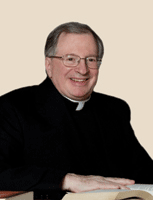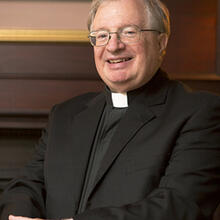The beatification of John Henry Newman by Pope Benedict XVI on Sept. 19 in Birmingham, England, brought particular consolation to Catholics in the English-speaking world. From the time of Newman’s death, even fellow Britons who did not share his Catholic faith judged him worthy of canonization. An editorial in the Times of London the day after he died reflected on the popular belief in his holiness. It read: “Of one thing we may be sure, that the memory of his pure, noble life, untouched by worldliness, unsoured by any trace of fanaticism, will endure, and that whether Rome canonizes him or not, he will be canonized in the thoughts of pious people of many creeds in England.”
The process of canonizing a saint, as the late Vincent Ferrer Blehl, S.J., wrote in America more than 20 years ago (3/11/89), “begins with the faithful and their relationship to the potential saint. Certain of God’s faithful become attracted by the personality and heroism of another person, and in their esteem for that person they experience a desire to experience that particular way to holiness.” The hierarchy, he added, “cannot ignore a devotion that, if authentic, has its origins in the action of God in human hearts.”
Father Blehl went on to explain that in the early stages of the process, the testimony to a saint’s holiness is basic to the preparation of a candidate’s cause. Newman’s file contained 18,000 pages of testimony. The search for testimony began, according to Blehl’s obituary in the British newspaper The Independent (12/6/01), with an article in America by Charles J. Callan, O.P., in November 1941 that canvassed opinions about Newman’s sanctity. “The response,” The Independent reported, “was overwhelming.” Nonetheless, it took nearly another 40 years for the process to get moving.
In 1959, during a visit to England, Father Blehl discovered that those responsible for promoting Newman’s cause were not following the appropriate procedures. Using his Jesuit contacts in Rome, Father Blehl helped set the work on the right course, but still it languished for another 20 years. Blehl had hoped to be appointed to the historical commission for Newman’s cause, but his Jesuit superiors assigned him instead to a succession of teaching positions back in the United States.
In 1979 the Archdiocese of Birmingham was making yet another start. “Full of enthusiasm” for the cause, The Independent reports, Father Blehl sought early retirement from Fordham University so he could devote himself full time to Cardinal Newman’s canonization. Birmingham’s archbishop named him chairman of the historical commission, and subsequently he became postulator of the cause.
In 1989 the case for Newman’s sainthood was completed, and in 1991 Pope John Paul II issued a decree declaring the cardinal’s heroic virtue and naming him “venerable.” In 2008 the Congregation of Saints accepted as a miracle the cure of Jack Sullivan, a permanent deacon in Boston, of a crippling spinal disorder. This fulfilled another of the requirements for Newman’s beatification. Miracles, Blehl had written, are confirmation of the holiness people of faith have already witnessed. Regrettably, Blehl did not live to see this miracle approved or Newman beatified. He died in 2001.
Pope Paul VI once whispered to the French Academician and theologian Jean Guitton: “Be consoled. One day Newman will be declared a doctor of the church.”
“When that day surely arrives” and Newman is named a saint and doctor of the church, the author of Father Blehl’s obituary wrote, “nobody should forget that it was Vincent Blehl more than anybody who made it possible.”








